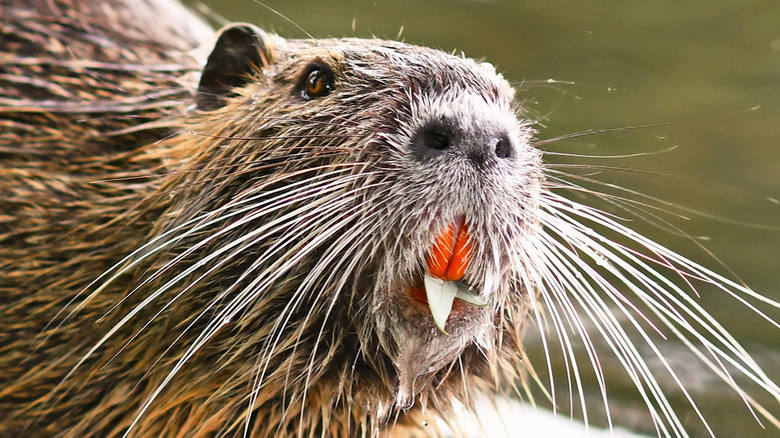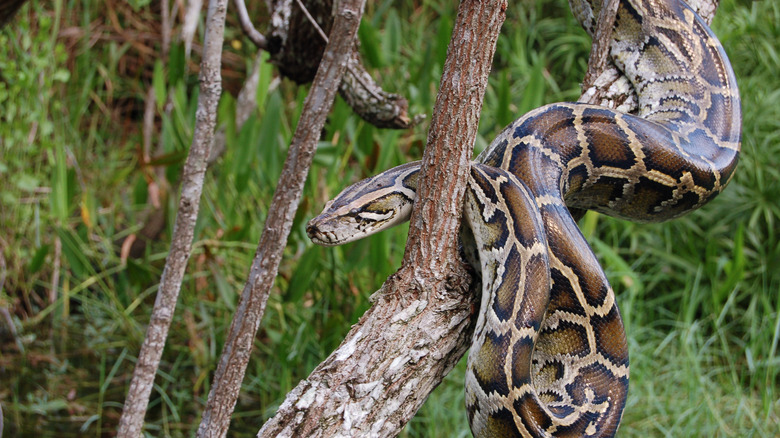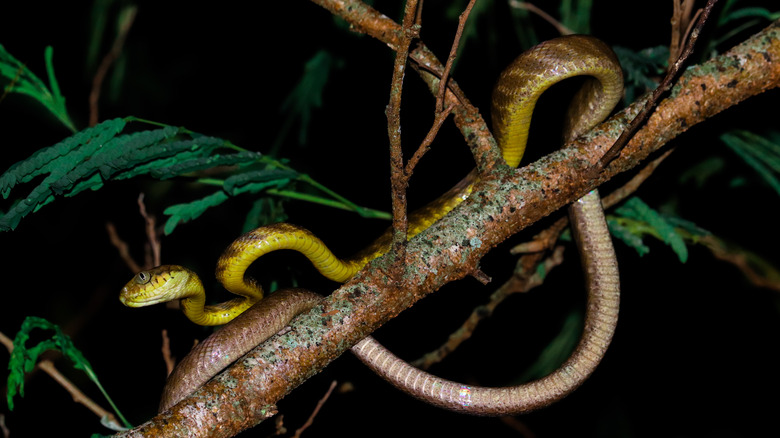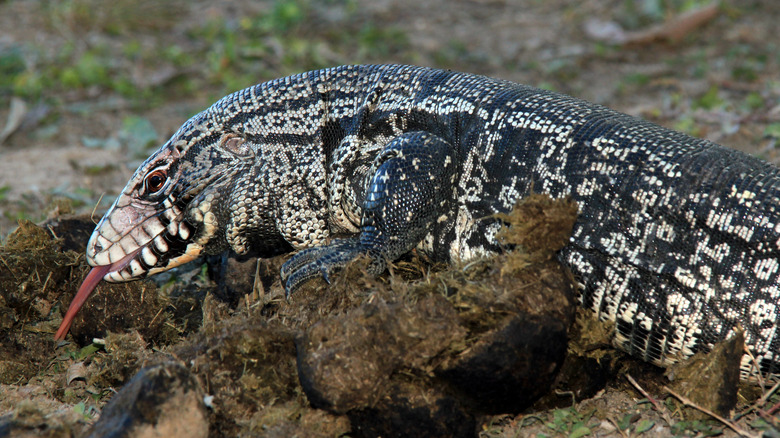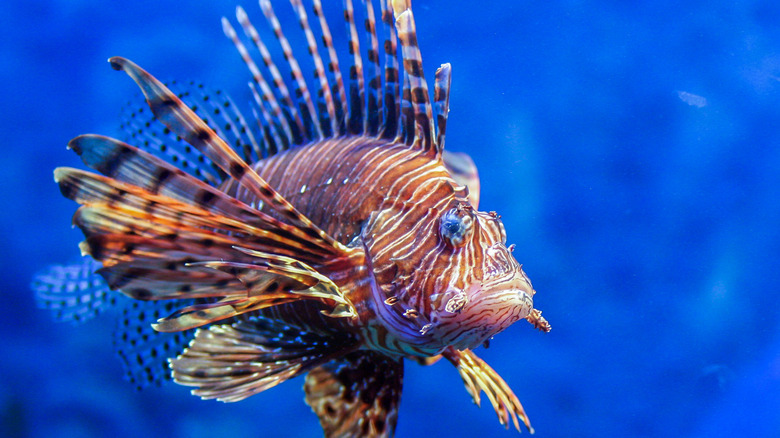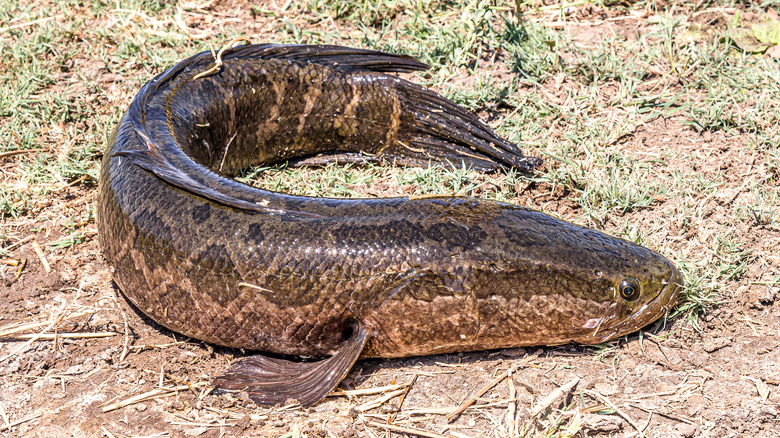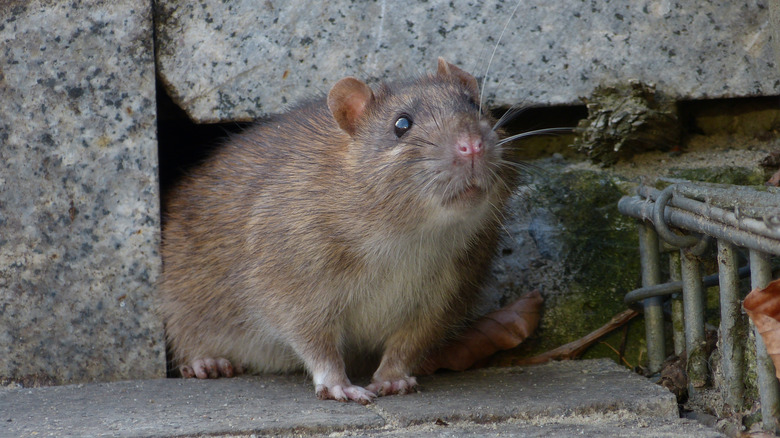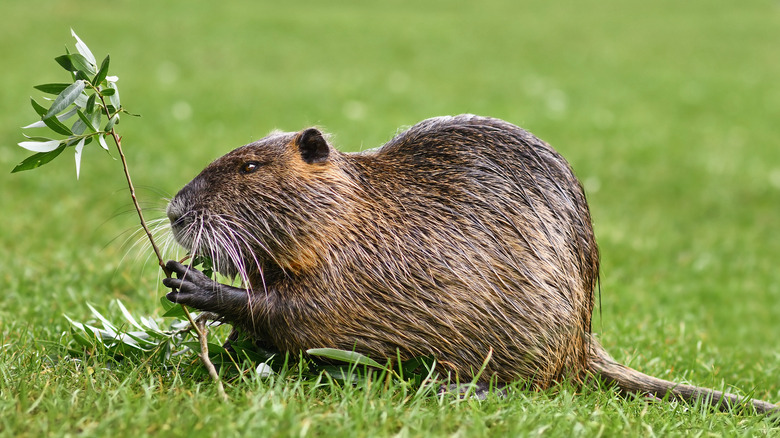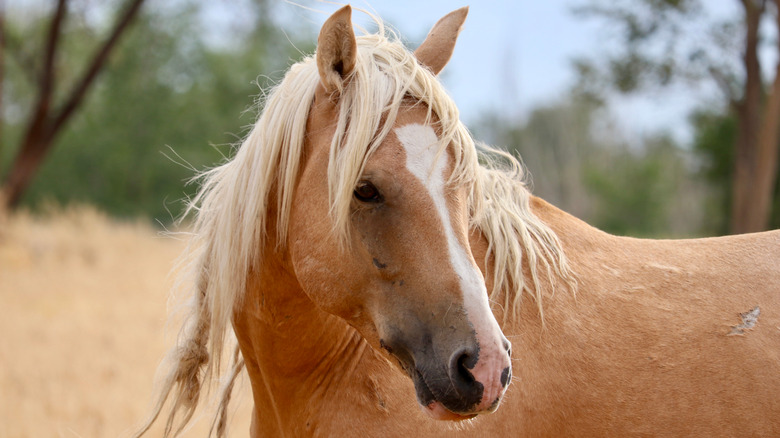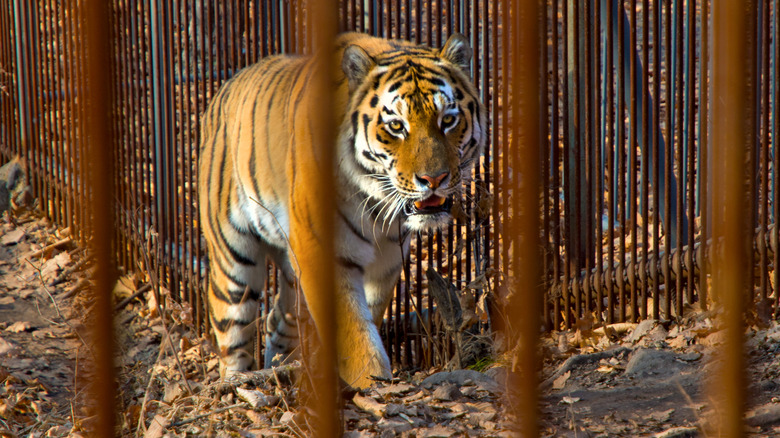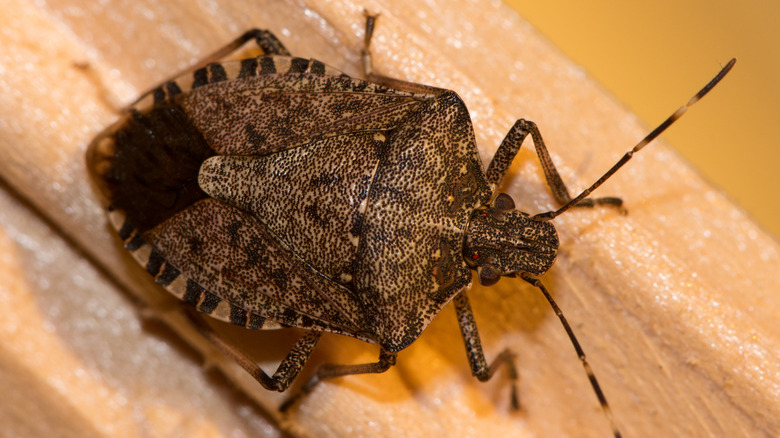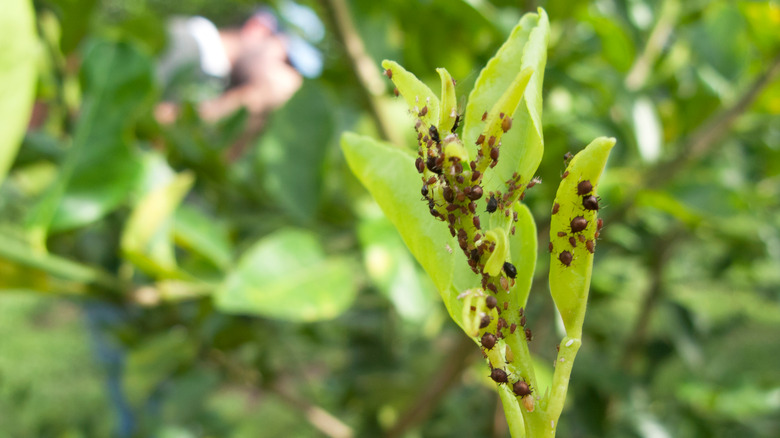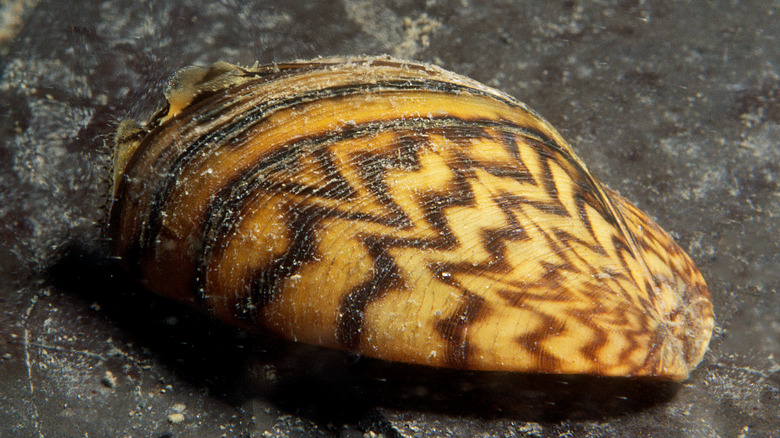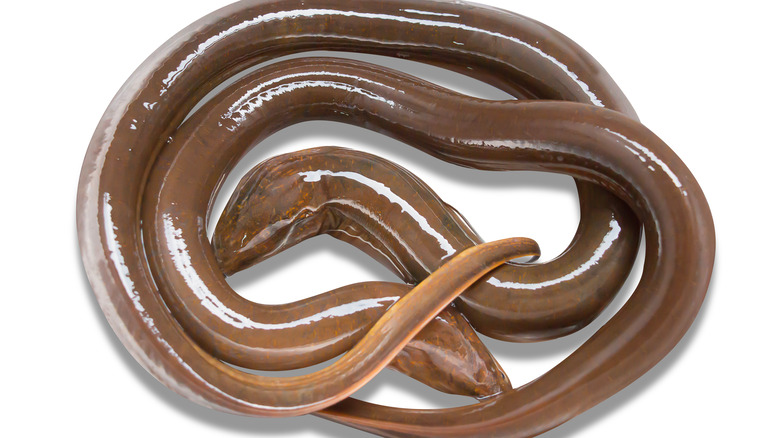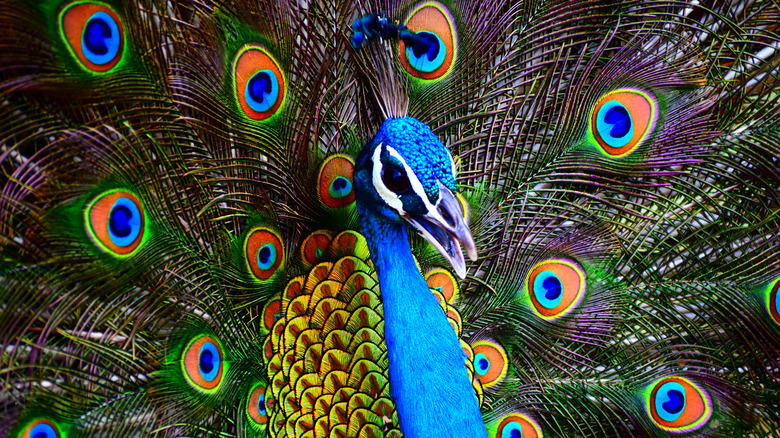Animals That Were Never Supposed To Be In The US
From coast to coast, natural beauty abounds in the United States. National and state parks showcase incredible geological features as well as unique flora and fauna. Some of the animals inhabiting the wilds of this expansive nation have gained iconic status. For example, deer, bighorn sheep, bald eagles, and pronghorn provide thrilling sights that people travel far and wide to observe firsthand.
Outdoor enthusiasts enjoy opportunities to scope out animals of every shape and size endemic to this country. They include diminutive species like iridescent hummingbirds and red-breasted American robins. Medium-sized species include scrappy wild turkeys and mischievous raccoons. The same goes for larger animals, including bobcats, coyotes, moose, bison, and black bears. Each of these species is as American as apple pie, drawing animal lovers from the world over to catch a glimpse of them in the wild.
But depending on where you travel, you might encounter creatures that prove the stuff of nightmares. They've devastated local environments, eradicated biodiversity, and show no signs of slowing down, according to National Geographic. From Burmese pythons to venomous brown tree snakes and rodents of unusual size (such as nutrias), they're not supposed to be in the U.S.
You'll also find the occasional species that's integrated into local environments and cultures, becoming synonymous with regional history. Such is the case with breathtaking wild mustangs, which can be found roaming the free lands of the American West (via Smithsonian Magazine). Here's what you need to know about some animals that were never supposed to be in the U.S.
Burmese pythons devour the Florida Everglades
In 2018, a Burmese python shattered a nightmarish record: the prey-to-predator ratio. How? The 32-pound, 11-foot-long serpent swallowed every last bit of a 35-pound white-tailed fawn (via Live Science). And the snake in question was one of the little guys. In the wilds of Asia, Burmese pythons can exceed 20 feet, weigh 200 pounds, and be as wide around as telephone poles (via National Geographic).
Populations exist across Asia, from eastern India to Vietnam, where natural predators abound. These predators include eagles, crocodiles, big cats, other snakes, and humans. Burmese pythons were never supposed to exist in the United States, but then the sightings started.
Reports of pythons in the Everglades began in the 1980s, according to CBS. But the animals didn't establish a breeding population until 1992, when Hurricane Andrew destroyed an exotic animal facility, and an unknown number of serpents slithered into surrounding swamps. As History notes, female pythons lay between 50 and 100 eggs each year. Do the math, and you know what happened next.
Due to a lack of natural predators, populations exploded. The effects on the Everglades have proven devastating, as reported by Florida Fish and Wildlife. Pythons have a voracious and indiscriminate appetite only limited by what they can swallow, and the stretchy ligaments in their mouths ensure they can down just about anything. A 99% decrease in racoons and opossums, as well as significant decreases in marsh rabbit, bobcat, and fox populations in some areas of the Everglades attests to their appetite (via USGS).
Brown tree snakes wreak havoc in Guam
Brown tree snakes have plenty of tricks up their sleeves when it comes to preying on birds, even those nesting in bird boxes protected by smooth duct piping. As reported by Science, researchers in Guam captured film footage of a snake lassoing its body around and up wide duct piping to reach the bird nest above.
Where do these clever serpents originally hail from? Australia, Indonesia, Papua New Guinea, and the Moluccas islands, according to Columbia University. They can consume 70% of their body mass in a single meal, and they devour everything in sight, from birds to geckos, skinks to rats. But what eats the brown tree snake? In their natural habitat, they have two natural predators: monitor lizards and pigs.
But during World War II, serpent stowaways from the Admiralty Islands (near Papua New Guinea) landed in Guam. The island had no native monitor lizard or feral pig populations, but it did have vulnerable bird, lizard, and small mammal species. The result? A perfect storm for ecological disaster.
In a little over 70 years, brown tree snakes have devoured nearly all of Guam's native bird species (via Science Alert). As reported by Bat Conservation International, flying fox populations are also in decline.
Tegus terrorize Central Florida
If you've ever wanted to see a lizard the size of a dog, look no further than the Argentine black and white tegu. According to Georgia Wildlife, these lizards grow up to 4 feet long and weigh 10 pounds or more. The largest of the tegu species, populations flourish in Argentina, Uruguay, Paraguay, and Brazil.
Although tegus can climb, they never venture more than a few feet off the ground (via Florida Fish and Wildlife). Preferred habitats include savannas and freshwater and marine environments. In South America, juvenile tegus face a host of natural predators, including birds of prey, snakes, and pumas.
But how did they end up in the United States? Most researchers agree that irresponsible exotic pet owners let the scaly creatures skitter away in Florida and Georgia. After all, these lizards can quickly become unmanageable as they grow. Couple this with a tendency toward food aggression, and they ultimately make a less than ideal pet. Since they live for upwards of 20 years and lay roughly 35 eggs per year, you can see why wildlife specialists express concern.
The wilds of Florida and Georgia represent a veritable paradise for Argentine black and white tegu populations. They prove an especially worrisome problem in Florida, from the Panhandle to the Keys. The ginormous lizards live as far north as Jacksonville, according to ENNDS, which means they might have the entire state covered in short order.
Lionfish make a buffet of the Atlantic
Native to the Indian Ocean, Red Sea, and South Pacific, lionfish have plenty of natural predators in their native tropical waters, according to Lionfish. These predators include cornetfish, large eels, grouper, sharks, scorpionfish, and frogfish. Some researchers also speculate that some triggerfish and large snapper species may devour the flashy fish in their native ranges.
Lionfish have an extravagant beauty that makes them a treat for snorkelers. But if you assume you've got to travel halfway around the globe to see one, think again. They've invaded domestic waters, disrupting local ecosystems, from the Caribbean to the Gulf of Mexico and the Atlantic.
How did lionfish make their way into U.S. waters? While no one knows for sure, NOAA has a suspicion that at least some of these gorgeous specimens found their way into the wild through aquarium releases. After all, lionfish remain a staple of aquarium enthusiasts.
While we may never definitively know how breeding populations got started, one thing's for sure: These invasive predators have insatiable tastes, devouring just about every fish in sight to the detriment of local coral reefs. The fish also have venomous spines that prove very painful to humans. From the Caribbean Sea to the Atlantic Ocean, marine biologists have tried every trick in the book to eradicate their populations, including spoon-feeding them to sharks (via the Washington Post).
The northern snakehead's Chesapeake Bay reign of terror
Northern snakeheads originated in Russia, Korea, and China, according to the Chesapeake Bay Program. These powerful fish look like a cross between an eel and a python, with razor-sharp teeth and powerful tails. They can grow up to 33 inches long and survive out of water for days. How? They boast a complex respiratory system with an air bladder that works like a lung.
Northern snakeheads prefer living in slow-moving streams and rivers as well as marshes and swamps. In China, people cultivate northern snakeheads in reservoirs, ponds, and rice paddies. Natural predators include birds, bigger fish, and humans. Northern snakeheads are Popular at the fish market, and some Asian countries traditionally prize snakehead flesh as a delicacy (via the Daily Beast).
Unfortunately, these hardy survivors have made their way into American fresh and brackish waterways in recent years, wreaking havoc along the way. Females can carry up to 100,000 eggs apiece, which means their spread to California, Maryland, North Carolina, and Florida is unsurprising, as reported by the New York Times. They eat anything they can swallow, which has proven disastrous for local populations of fish, birds, mammals, and reptiles.
Norway rats eat their way across America
First introduced to the U.S. in 1775, Norway rats have spread across the entire nation, even reaching Alaska and Hawaii (via National Zoo). Many people know them as sewer rats or brown rats. They prefer living in populated areas, where they forage through trash for easy pickings. But these natural-born survivors can make a go of it just about anywhere.
After all, rats represent the ultimate survivors, capable of foraging for food in both urban and rural areas. From open fields to forests, high-rise buildings to sewers, they have a talent for finding something to eat.
One study of the contents of a rat's stomach revealed more than 4,000 different items inside! And the food gathering doesn't stop at foraging. These large rodents can transform into vicious hunters at the drop of a hat. In the wild, scientists have observed them catching lizards, fish, other rodents, and chicks to satiate their protein needs.
And don't let the name fool you. Researchers hypothesize that Norway rats originated in Asia, making their way as stowaways worldwide in the 18th century. Once their paws hit the ground in a new location, their foraging and survival skills help them dominate. They also prove very prolific. Females have eight pups per litter on average, as reported by the Texas Invasive Species Institute, and they can have up to seven litters per year.
Digging up destruction with nutrias
While their official name is nutria, the good people of Louisiana have a more fitting title for this furry disaster: swamp rats. Originally imported to the U.S. from South America in the 1930s for their fur, populations have exploded along the Eastern Seaboard, according to the USDA.
These nasty, big-toothed critters prove excellent at noshing through the native habitats of countless other species. They uproot fragile wetland areas with abandon, devouring vulnerable endemic aquatic plants with zeal. Since they first arrived stateside, they've established breeding populations in at least 20 states, including sightings in California (via the California Department of Fish and Wildlife).
Like many of the animals on this list, nutria excel at reproducing. Females birth up to 13 pups per litter and are ready to breed again within days of giving birth. As a result, managing their numbers remains a major priority for wildlife departments across the nation.
How do you recognize nutria in the wild? According to Live Science, they're roughly the size of raccoons and weigh between 15 and 22 pounds. They look like a cross between a giant rat and a beaver, with telltale orange buckteeth and long, rounded tails. Animal and Plant Health Inspection Services notes that in northern climates, nutria often have stub tails due to cold-weather damage. Recognizing and killing these pesky rodents comes with a big payoff in some states, including Louisiana. According to Inverse, one local hunter reaped $55,000 in bounties after turning in roughly 11,000 nutria tails.
Wild horses stampede back into the American West
Unlike other species on this list, America's wild horses haven't contributed to an ecological disaster. What's more, they're emblematic of America's independent, freedom-loving spirit. According to Smithsonian Magazine, they live across a vast swath of North American territory, from Nova Scotia to Nevada. People travel from all over the world to capture glimpses of their windswept manes.
Spirited and intelligent animals, wild horses roam areas of the nation where many large mammals fear to tread. These master foragers survive on cheatgrass and sagebrush, reducing wildfire risks as they graze. Despite their majestic beauty and freewheeling ways, not everyone appreciates their presence. Ranchers claim they compete with cattle for grazing land and water. Of course, domesticated cattle aren't supposed to be in the U.S. either, but that's another story.
As for mustangs, do they really fit into the invasive species category? The fossil record says otherwise. Prehistoric equines lived in America as far back as 50 million years ago before disappearing back over the land bridge into Asia roughly 13,000 years ago (via American Wild Horse Campaign). Reintroduced to the U.S. by the Spanish in the early 1500s, wild horses quickly reintegrated, thriving on the frontier. Mustang activists, including "Dances With Wolves" author Michael Blake, work hard to ensure these spectacular creatures will be around for future generations to appreciate.
Captive tigers in the US outnumber their wild counterparts
Some animals survive rather than thrive in the United States. Captive tigers fall into this category. The plight of these big cats was thrust into the spotlight in 2020, when Netflix's wildly popular true-crime docuseries "Tiger King" aired. According to the Verge, the show became one of the most-watched in the network's history, enjoying ratings on par with "Stranger Things." During one six-day period at the end of March 2020, its seven episodes were streamed over a total of 5.3 billion minutes (via Deadline).
Unfortunately, many viewers got so enraptured with the bizarre tale of a zoo owner's descent into madness that they failed to see one of the series' larger lessons: Captive tiger populations in the U.S. are out of control (via World Wildlife Federation).
Today, roughly 5,000 tigers live in the U.S. Compare this figure to the 3,900 remaining in the wild, and you can see why there's cause for alarm. Shockingly, only 6% of the captive population lives in zoo facilities equipped to care for them properly. Where can you find the rest? In locations poorly suited for their needs, including private breeding facilities, roadside attractions, and even people's backyards. The tigers present a danger to caregivers, neighbors, and themselves.
In recent years, captive breeding operations in Asia have exploded to meet "domesticated" tiger demands worldwide. These so-called tiger breeding farms often undermine species recovery in the wild. Caged big cats were never meant for life in the U.S.
Brown marmorated stink bugs maraud the East Coast
Around 1998, the brown marmorated stink bug first made its way into the U.S. near Allentown, Pennsylvania, according to PennState Extension. A stowaway, it probably hopped a ride on a cargo ship from East Asia (via USDA). But unlike China, where samurai wasps and other natural predators keep the bugs in check, stinker populations have exploded in the U.S. (via Science Mag).
These stinkbugs have insatiable appetites, indiscriminately mowing through American agricultural staples, including most veggies and fruit. How bad is the problem? In 2010, apple growers in the mid-Atlantic region reported $37 million in damages due to the brown marmorated stink bug.
According to Michigan State University, tracking the insect's invasion proves tricky because the its mottled brown appearance looks similar to native stinkbug populations. The patterning also makes for the perfect tree bark camouflage. What's more, it can take time for the damage they've done to show. Researcher Julianna Wilson notes, "The damage from this pest often doesn't appear until three or four weeks after it feeds. It can come and go and you wouldn't even know it was there until it was too late."
Asian citrus psyllids threaten US orange crops
As if the Sunshine State hasn't been inundated by enough invasive species, there's also the Asian citrus psyllid. Carriers of a bacteria called that causes Huanglongbing disease (also known as yellow dragon disease), these tiny pests have infected groves in Florida as well as parts of Louisiana, Texas, Georgia, and California, according to the USDA.
Also known as citrus greening, Huanglongbing represents one of the world's most devastating and severe citrus diseases. It has no known cure, which means afflicted trees require immediate removal to avoid infecting nearby groves. Quarantines have been enacted to protect unharmed trees, according to California Citrus Threat.
About the size of a grain of sand, these disease-carrying critters originated in eastern Asia and India. Illegally imported, diseased trees likely first introduced them into the United States, as reported by the University of California. They remain a significant threat to farmers who cultivate grapefruit, oranges, mandarins, and lemons.
Zebra mussels incapacitate local ecosystems
Native to the fresh waters of Eurasia, zebra mussels have distinctive zig-zag-striped shells, as reported by the USGS. They're no bigger than fingernails, but don't let this miniature mollusk's size fool you. They wreak havoc on freshwater lakes in the U.S.
But how did a water-bound animal end up in America? Scientists hypothesize that they made their way into American waterways via large European shipping vessels. First appearing in the Great Lakes in the 1980s, these shelled pests were deposited into the freshwater systems of the U.S. via the water discharged by these ships.
There, they flourished, making their way into the eastern Mississippi River's network of large rivers. They also hitched rides on fishing boats and other recreational vessels, traveling to California, Nevada, Utah, Texas, and Colorado.
According to the National Park Service, "Prevention is the best way to keep a water body clean of zebra mussels." And the stakes prove high. These hard-shelled pests destroy natural habitats by filtering out native algae. Zebra mussels also incapacitate and kill endemic mussels through "biofouling," accumulating on any surfaces submerged in water. Besides severe ecological consequences, zebra mussels have clogged power plant water intakes. The result? Millions in damages and cleanup.
Asian swamp eels are the stuff of nightmares
Despite their name, Asian swamp eels aren't eels at all (via the Texas Invasive Species Institute), but these scaleless creatures have cylindrical bodies and tapering tails much like eels. From their bristle-like teeth to the easily recognizable V-shaped gills on their throats, they look fierce. Also known as rice eels, these hungry predators will devour just about anything that swims by, from frogs to fish, turtle eggs to shrimp.
According to the USDA, they were inadvertently introduced to the U.S. as an imported food source. A widespread species in the aquarium trade, they may have also slipped into waterways through escapes and releases. Researchers remain on the fence about how devastating this species could be in the U.S., but they fear populations could explode because of the species' no-holds-barred approach to hunting.
What steps will prevent these voracious predators from spreading? Scientists have pioneered diverse techniques, including vegetation removal and the creation of electrical barriers.
Peacocks running wild in SoCal
Known and prized for their multi-hued plumage, peacocks have become a straight-up nuisance in northeast Los Angeles (via the New York Times). Native to India, the feathered fowl have California homeowners in an uproar due to their incessant squawking, well-placed bird bombs, and territorial (ahem, aggressive) tendencies.
Of course, these beautiful birds also have their supporters. The Guardian reports that some locals can't get enough of the loud fowl, even feeding peacocks in direct defiance of municipal regulations. That's a bold stance, since feeding these birds comes with a maximum jail sentence of six months or a $1,000 fine.
So, what gives? According to retired Los Angeles Zoo bird curator Mike Maxcy, roughly 30% of Los Angelenos love the flashy birds. As for the other 70%? It's turning into an all-out war. Maxcy notes, "It's the most polarizing thing I've ever been involved with."
The most birdbrained residents have taken their disdain next level, attempting to poison the birds. They've also shot them with pellet guns and even tried to run them over with cars. Considering the birds' propensity for squawking loudly at dusk and dawn, perhaps sleep deprivation is to blame for the aggression.
